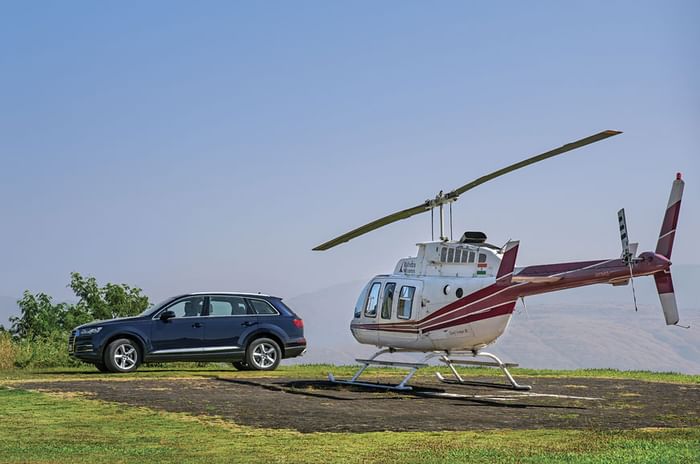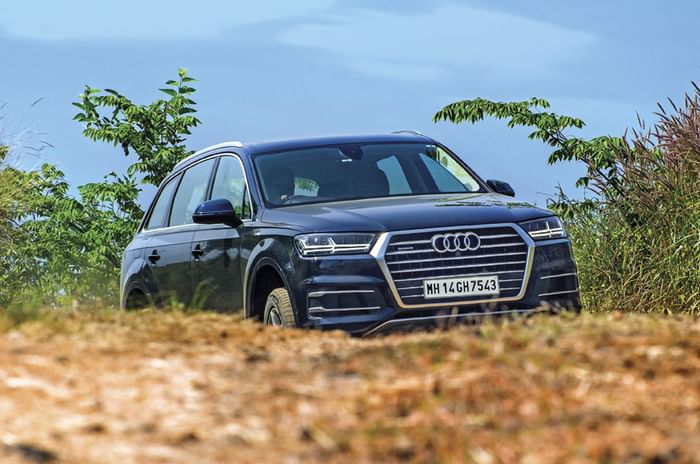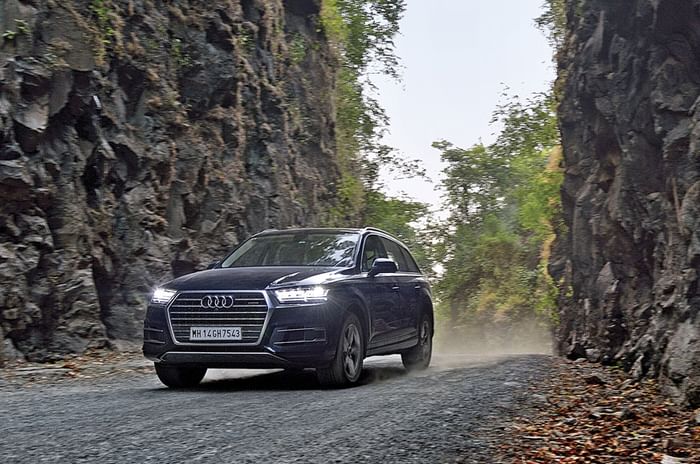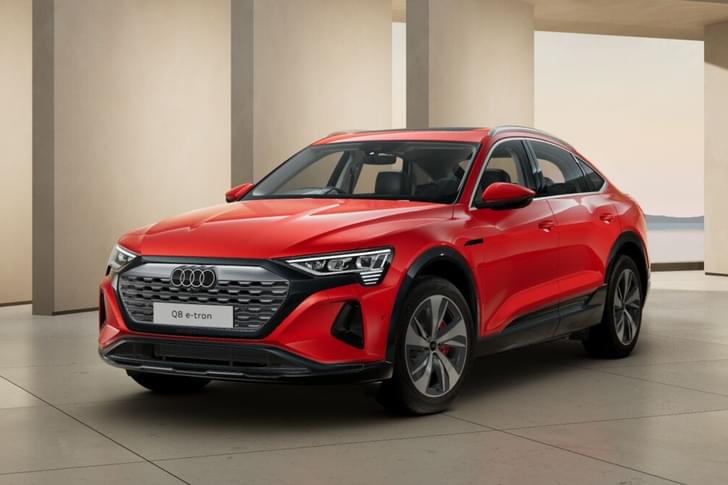The Autocar India office sits below the flight path of helicopters landing in Mumbai’s racecourse. The traffic of Bell, Eurocopter and Agusta helicopters increase by late afternoon making their last sortie of the day before sundown stops chopper operations. I’ve often wondered who are these people in the choppers and where are they coming from?
I don’t understand the point of private helicopters in India. Yes, they are great for defence, during natural calamities, for rescue missions, for connecting oil rigs and for politicians to tour the country during elections. There are few landing places for private helicopters in Indian cities. Mumbai, I know has only two – the Juhu aerodrome and the helipad at the racecourse. There is a helipad at the Raj Bhavan and a Navy helipad at Colaba but they are out of bounds for private citizens. So even if you are India’s richest person, you still have to drive the last few kilometres to your home after landing at the racecourse.
Private aircrafts, I can understand. Time is precious, and an aircraft is a fast and comfortable way to criss-cross the country or the world. Helicopters are slow in comparison and have limited range; they do need less space to land and take-off though. Is the helicopter just an ego toy or a productivity machine? Since most helicopter flights operate around a 500km radius, wouldn’t a car do the job as efficiently? Yes, there obviously would be a time and money penalty, but what about comfort and convenience?

We decide to find out. And there’s only one way to do that – the Autocar India way. No conjectures, no guesses, no assumptions, but hard facts and quantifiable data. For that, we needed two things, a car, and a helicopter.
We tackle the easy part first. Which car do we pit against the flying machine? Helicopters are known as go-anywhere vehicles not restricted by airports or airstrips. So the car too has to be a go-anywhere vehicle, and that pointed to an SUV. With their strong engines, four-wheel drive, high ground clearance and rugged build quality, SUVs promise to take you where lesser cars fear to tread. Since a chopper owner will be a high-net individual, this SUV had to be luxurious too. We turned to the SUV that had we had driven down to India from Ingolstadt – the Audi Q7. But this one is powered by a petrol engine. The Audi Q7 40 TFSI, with its Quattro system and a 252hp motor, is requisitioned for the test.
Now comes the difficult part. Where do we get our hands on a helicopter? Bell and Eurocopter have no media vehicles like car manufacturers to loan us. And there are no helicopter owners in our social circles. There is only one thing we can do – charter a helicopter. Yes, it is going to be expensive, but we spare no expenses when it comes to bringing our readers a good story.

I recruit the help of my two colleagues, Gavin and Nikhil. The plan is simple. Gavin will fly to Pawna Lake from Mumbai while Nikhil will drive the Audi Q7. Pawna Lake, 120km from Mumbai is a popular site for weekend tourists from Mumbai and Pune. Ringing the lake are some sprawling properties of the rich and famous. One of these properties has a helipad and the owner has given us access to it. The stage is set for the battle.
D-Day. It’s nine in the morning. Nikhil gets into the Q7 and points its nose towards Pawna. Gavin has the office driver to chauffeur him to the helipad at the racecourse. The chopper is scheduled to arrive at ten, and Gavin doesn’t want to be late. The match is on.
The chopper is already waiting when Gavin arrives. It’s a Bell 206 L3 single-engine, light-utility helicopter that can carry five passengers. In the cockpit, along with the pilot, is a flight engineer. Like in every aircraft, a chopper has to be signed off by a service engineer every time, before it can take-off. Our commercial flights don’t carry an engineer along because there are engineers at the airports they land, to sign-off the aircraft. But there are no engineers at our destination, so the engineer is on-board to certify the Bell is safe to take-off after it lands at Pawna. Just imagine getting your car signed-off by a trained engineer every time you start the engine. No wonder this 1992 model is as good as new. If we followed the stringent maintenance schedule that flying machines follow, our cars would last us a lifetime without once stalling on the road. While the pilot and Gavin are ready to fly, there is a hiccup. Mumbai Air Traffic Control has asked the chopper to wait since there are other aircrafts nearby. There is no option but to wait for ATC clearance.

Meanwhile, Nikhil in the Audi Q7 has already reached the Mumbai-Pune Expressway. The 2.0-litre, four-cylinder, turbo-petrol engine is refined, the eight-speed automatic gearbox is intuitive, and he is making good time. The 75-litre tank gives the big SUV a range of over 500km and it can easily make the run to Pawna non-stop, but Nikhil decides to take a break for a cup of tea. And as Nikhil is sipping his tea, the chopper is still waiting for clearance.
The Bell, on a tankful of fuel, goes about the same distance. It burns around 140 litres of fuel every hour and the 350-litre tank is good for about a two-and-half-hour flight.
The ATC clearance finally comes through and the pilot fires the Rolls-Royce 250-C30P engine, sparking life into the 11.28m-long main rotor and the 1.65m tail rotor. Unlike the elegant aerodynamic airflow over a wing in a fixed-wing airplane, the rotors of the helicopter beat the air into submission. This engine develops 650hp at the shaft. Inside the cockpit, the pilot checks that all warning lights and parameters are green before he pushes forward on the cyclic and pulls the collective up. One tonne of metal seems to dangle precariously as it leaves the ground before it climbs up and is soon a dot in the
city’s skyscape.

Though the empty weight of the Bell is just 1,228kg, the maximum take-off weight is 1,882 kg. So a fully loaded Bell is still lighter than the 2,240kg kerb weight of the Q7 without passenger or luggage.
Nikhil, meanwhile, is back on the road. Except for a bit of tyre noise from the wide rubbers, the cabin is a very quiet place. While Audi claims that the big SUV has a top speed of 233kph, the road conditions and traffic rules dictate a much more sober pace. You would expect the helicopter to be much faster than the Audi, but surprisingly it isn’t. The Bell’s top speed of 241kph is not that much faster than Audi’s claim of 233kph. Where it beats the car is it can maintain a cruising speed of about 200kph through most of the flight and also take a shorter route, which effectively makes it much faster.
Taking off from the heart of Mumbai, Gavin gets a fantastic aerial view of the city that not many are privileged to see. And better still, he could open the windows to take in the view. But what he didn’t count on was the rotor noise that makes any conversation in the cabin impossible, and the cramped cabin space. The Q7 costs a fraction of this Bell but scores much higher on cabin comfort.
What takes three hours in the car is a 30min ride in the chopper. It’s less time than Gavin’s commute in peak traffic, from the office to the racecourse. Even if you add the drive to the helipad and waiting for ATC clearance, the chopper is still much faster than the Audi. So when the Bell lands at the helipad in Pawna, the Audi is still some distance away, not helped by the fact that Nikhil made another stop to grab a bite and relieve his bladder. Gavin’s rumbling stomach reminds him that he has not had any breakfast, and the nearest food joint is a few kilometres away. Nor is there a toilet. All he can do is wait until Nikhil shows up in the Audi Q7.

So what did we learn? We already knew that helicopters were expensive to buy and maintain. We discovered that while they may be expensive, they can be noisy, cramped and sparse in creature comforts as well. And impractical, unless you have your own private helipad. But there is no denying that to people for whom time is money, a helicopter makes a whole lot of sense. It’s a different high when the city’s tallest skyscrapers are like toy houses under your feet and traffic is something that you only look down at. Yes, I won’t have a helicopter registered in my name but I have a consolation. I do have a license to drive the Audi Q7. Also, isn’t it nearly just as fast as the Bell? Can I have the keys, Nikhil?






















































































